Quezon City, the cities of Manila and Pasay are the 1st, 2nd and 3rd Overall Most Competitive Highly Urbanized Cities (HUCs), respectively, in the 2021 run of the Cities and Municipalities Competitiveness Index (CMCI). Quezon City has been awarded Most Competitive HUC in the country for five times since 2016. It has in fact been recognized as a Hall of Fame Awardee. Consequently, it was excluded in 2020 in the ranking, which was the only time that it was not awarded Most Competitive HUC.
CMCI is an annual ranking of local government units (LGUS) in the Philippines. The index was developed by the National Competitiveness Council (NCC) through the Regional Competitiveness Committees (RCCs), with the assistance of the United States Agency for International Development.
HUCs in NCR have consistently secured the top awards in this highly-regarded competition among LGUs in the country. Initially just divided into two categories: Cities and municipalities, CMCI awards have evolved into giving distinction also to provinces. In recent years, cities were further classified into two categories: HUCs and component cities, and the municipalities into three: 1st and 2nd class municipalities, 3rd and 4th class municipalities, and 5th and 6th class municipalities.
Apart from the Most Competitive Award, LGUs are also recognized based on the following four (4) pillars: Economic Dynamism, Government Efficiency, Resiliency, and Infrastructure. An additional pillar, Innovation was introduced this year, but was not scored. So, it was not included in the ranking.
The 2021 awardees are the following:
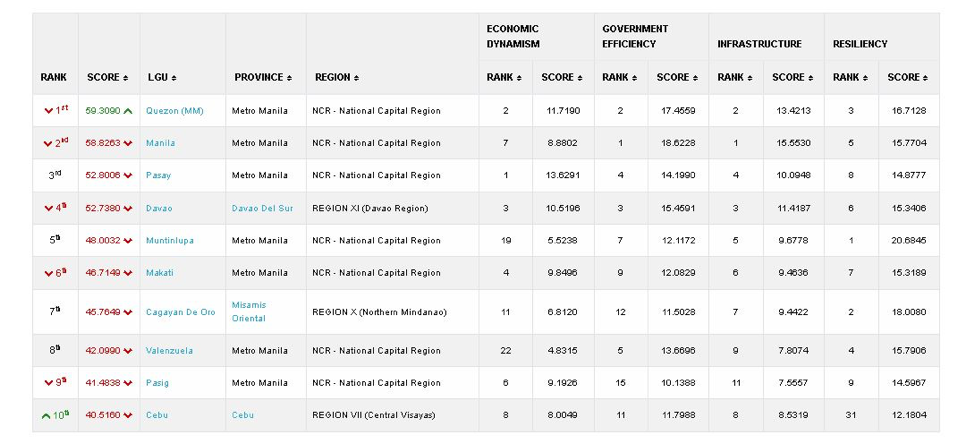

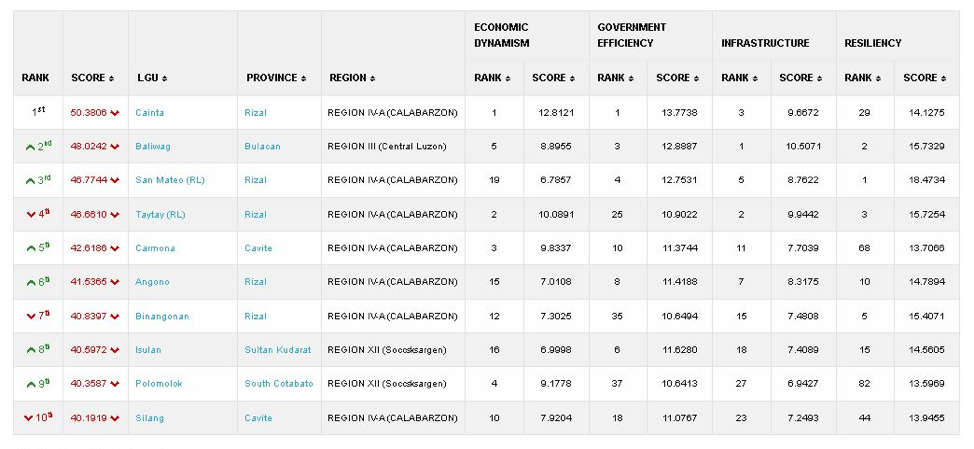
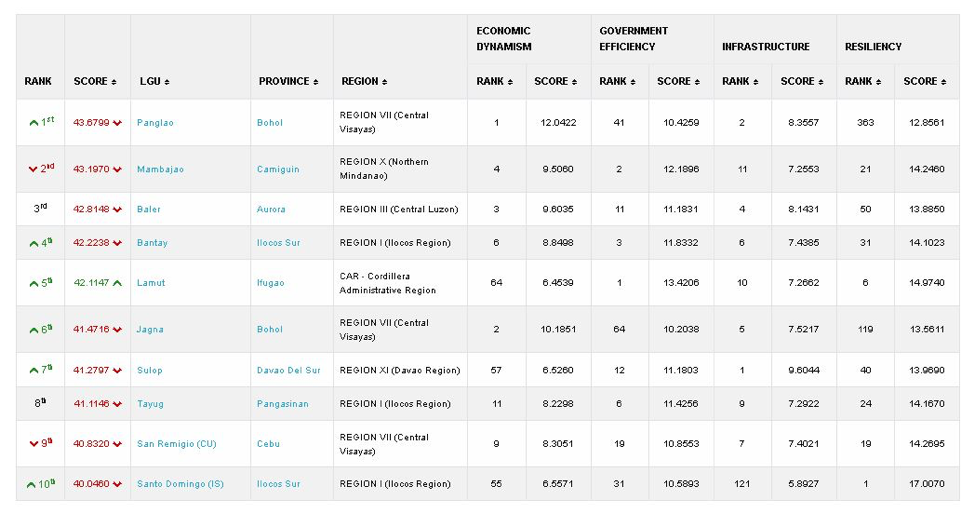
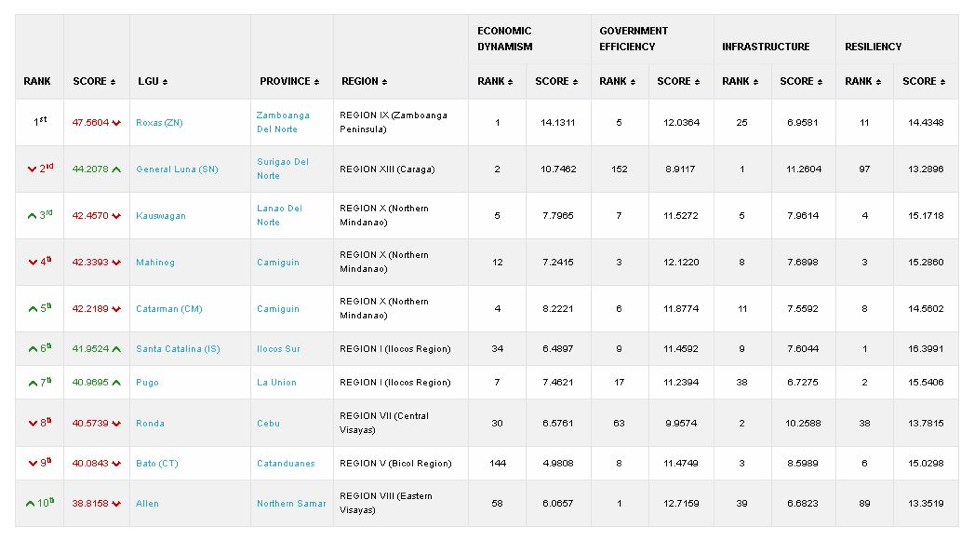
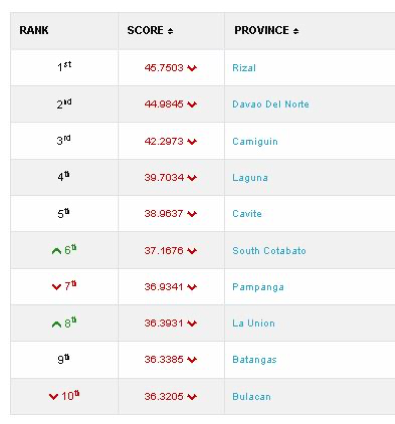
The ranking of other LGUs can be found in the CMCI portal at https://cmci.dti.gov.ph/rankings.php.
CMCI built on the competitiveness framework developed by Michael Porter which focuses on the idea of productivity where local competitiveness is viewed as how a city or municipality knows its resources and how it uses these to improve its standard of living. Following this definition, the data used in the index are all-encompassing. It includes, among others, the number of schools, doctors, and teachers; and how long a government transaction takes in the LGU, i.e. acquiring business permit.
The collected data are then weighted and standardized. As mentioned, the index consists of five pillars, with the following weights:
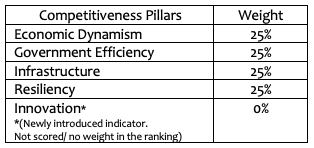
The overall competitiveness score is the sum of scores on the four Competitiveness Pillars. Each pillar consists of ten (10) indicators and several sub-indicators. One indicator for Economic Dynamism is “Cost of Doing Business”. Its sub-indicators are Cost of water, cost of labor, and cost of electricity. The scores are determined by the values of the actual data, as well as the completeness of the submitted data. The higher the score of a city or municipality, the more competitive it is.
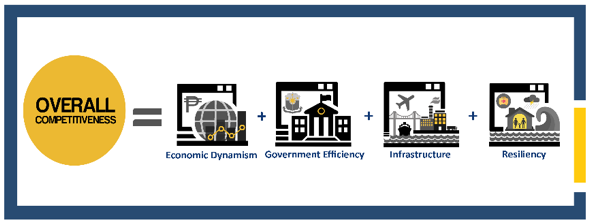
The University of the Philippines – Institute for Small Scale Industries (UP ISSI) handles the gathering and validation of data of the LGUs in the National Capital Region for CMCI. As such, UP ISSI also sits in the RCC, together with the representatives from the private and public sector. The Institute has been the partner academic institution of the Department of Trade and Industry in this endeavor since CMCI started in 2013.
In 2013, only twelve out of the seventeen LGUs in NCR participated in CMCI. Now, all LGUs are participating and are submitting their data. Since then, ten LGUs in NCR have brought home 64% of all the awards in their category.
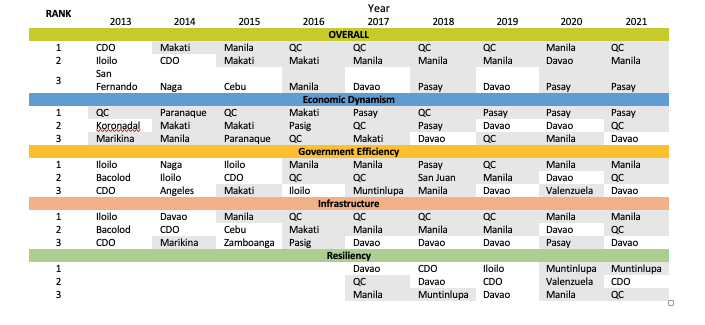
Mr. Guillermo Luz, one of the ardent advocates of CMCI , accentuated that, “Our goal was to measure all 1,634 cities and municipalities annually and to eventually institutionalize and embed this data-gathering and analysis in cities [and municipalities] so they could use their own data to plan their futures.”
The scores of each LGU that participated in CMCI are all available in the CMCI portal. These data can be used by policy makers in assessing where their LGU stands vis-à-vis other comparable political units. The private sector can also scrutinize these data and use them as guide in making their business decisions like in deciding where to locate their business for expansion.
Disclaimer: The views expressed herein or in any article in the UP ISSI website are those of the authors and do not necessarily reflect the policies or opinions of UP ISSI nor the views of the University of the Philippines. Regarding Accuracy of Information and Usage of Data: Visitors and users of the UP ISSI website are advised that information contained within the website is assumed to be accurate. However, errors can occur even with computer-generated information. UP ISSI makes no representation regarding the completeness, accuracy, or timeliness of such information and data, or that such information and data will be error-free. Visitors are encouraged to review the official version of all documents on which they plan to rely on.